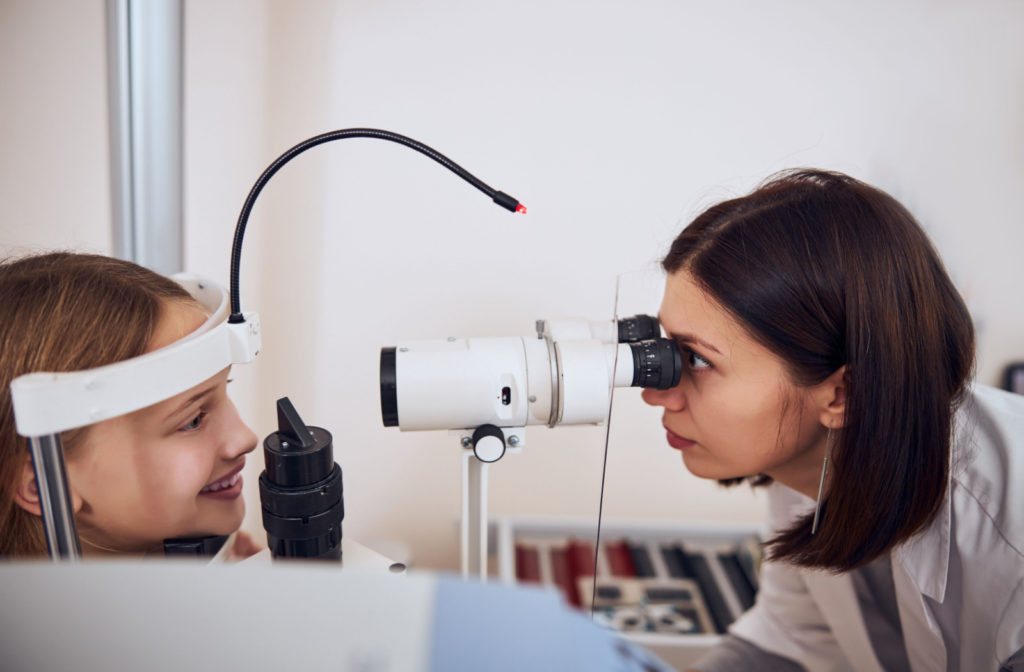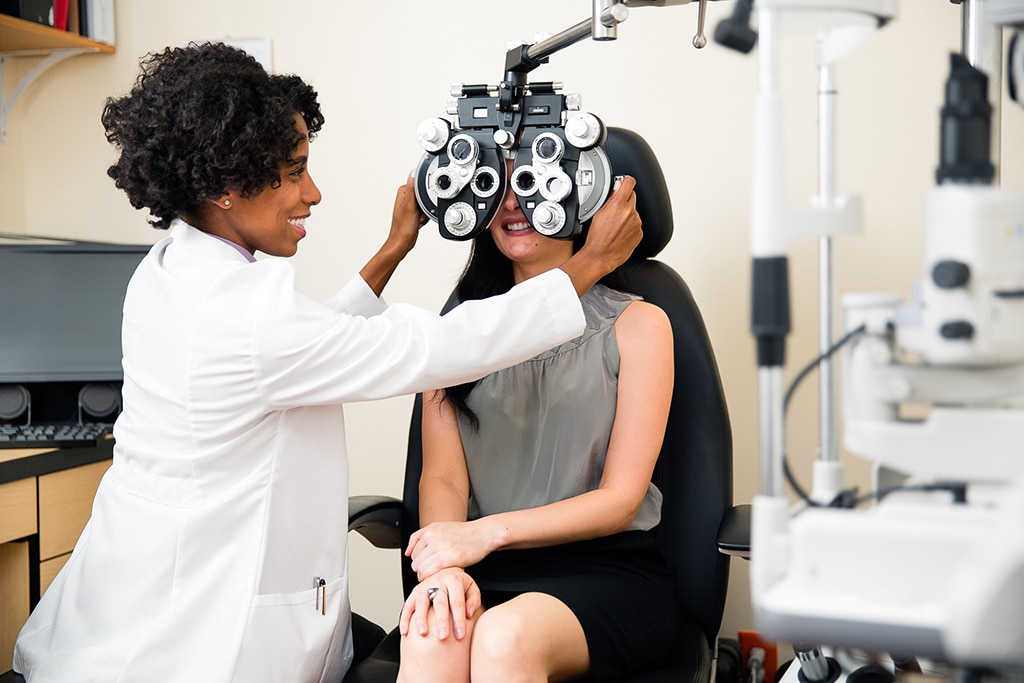Check Out the Best Optometrist Chino for Comprehensive Eye Care
Check Out the Best Optometrist Chino for Comprehensive Eye Care
Blog Article
Exploring the Most Recent Technological Developments in Optometry and What They Mean for Eye Doctors
From the accuracy of Optical Coherence Tomography to the nuanced insights offered by AI-driven analysis devices, these innovations are setting new standards in person assessment and therapy. As these improvements penetrate the method, eye doctors are encountered with the obstacle of accepting these devices to improve person end results.
Technologies in Diagnostic Tools
Progressing the area of optometry, advancements in analysis tools have actually reinvented the way eye treatment specialists analyze and identify eye conditions and visual impairments. The past decade has observed significant technical advancements, allowing even more exact and extensive assessments. Optical Comprehensibility Tomography (OCT), as an example, offers high-resolution cross-sectional pictures of the retina, permitting the early detection of illness such as glaucoma and age-related macular deterioration. This non-invasive imaging strategy has actually come to be important in modern optometric practice.
One more key advancement is the intro of advanced corneal topography systems, which map the surface curvature of the cornea with precision. These tools are specifically advantageous for fitting contact lenses and diagnosing corneal conditions. Electronic retinal imaging has transformed typical ophthalmoscopy, offering detailed, scenic sights of the retina that assist in detailed aesthetic examinations.
The advancement of wavefront aberrometry has actually additionally been critical, enabling the evaluation of refractive errors with unparalleled accuracy (Eye Doctor). This technology aids in personalizing rehabilitative lenses and enhancing surgical outcomes for refractive surgical procedures. Collectively, these diagnostic advancements empower optometrists to deliver premium patient care, making certain early intervention and customized treatment techniques, ultimately improving aesthetic health and wellness outcomes
AI in Individual Management
Building on the foundation of sophisticated diagnostic tools, the unification of expert system (AI) in patient management stands for a transformative jump for optometry. AI systems are significantly employed to enhance performance, accuracy, and customization in individual care. By evaluating vast amounts of information, AI can identify patterns and anticipate possible eye problems, enabling eye doctors to customize interventions better. This ability is important in handling chronic eye illness such as glaucoma and diabetic person retinopathy, where very early discovery and continuous monitoring are key.
Moreover, AI-driven platforms promote structured client communications and administrative procedures. Automated organizing, virtual appointments, and individualized follow-up strategies not only boost patient fulfillment but likewise maximize time monitoring for practitioners. These systems can triage individuals based on the seriousness of their conditions, guaranteeing that those in vital demand receive prompt focus.
Moreover, AI enhances decision-making by offering optometrists with evidence-based suggestions and therapy pathways. By integrating information from electronic wellness documents, AI tools use understandings that notify clinical choices, lowering the danger of mistakes and enhancing patient outcomes. As AI remains to advance, its function in client management will likely expand, reshaping the landscape of optometric care.
Developments in Retinal Imaging
In the world of optometry, retinal imaging has actually observed impressive technological innovations that are improving diagnostic abilities and individual treatment. Advancements such as Optical Comprehensibility Tomography (OCT) and fundus digital photography have actually revolutionized exactly how eye doctors analyze the retina and imagine. OCT, particularly, offers high-resolution, cross-sectional photos of the retina, permitting for the thorough evaluation of its layers. This capability is important for early discovery and administration of conditions like glaucoma, diabetic person retinopathy, and age-related macular deterioration.
Boosted imaging techniques like OCT angiography are further refining analysis accuracy. This non-invasive method maps blood circulation in the retina, supplying crucial insights into vascular wellness without the need for dye shots. In addition, flexible optics innovation is being integrated right into retinal imaging systems to correct eye aberrations, providing unmatched image quality. Such advancements assist in the identification of min retinal modifications that can represent condition development.
In addition, developments in expert system are augmenting retinal imaging by making it possible for automatic evaluation of huge datasets. These systems aid eye doctors in recognizing patterns a sign of pathology, consequently boosting diagnostic precision and efficiency. Jointly, these advancements are transforming retinal imaging right into a cornerstone of modern eye treatment, boosting results and broadening healing possibilities.
Teleoptometry's Expanding Duty
Teleoptometry is increasingly coming to be an important element of eye care, driven by improvements in electronic communication and analysis tools. read the article This is specifically useful in country and underserved locations where accessibility to specialized eye treatment is commonly restricted.
The integration of fabricated knowledge (AI) further boosts teleoptometry, making it possible for the evaluation of visual information and helping in the discovery of eye conditions such as glaucoma and diabetic person retinopathy. AI-powered formulas can swiftly translate intricate imaging information, providing optometrists with valuable understandings that strengthen professional decision-making.
Additionally, teleoptometry supports continuity of care through seamless assimilation with digital health and wellness records (EHRs), permitting eye doctors to maintain thorough patient histories. This ensures that individuals obtain personalized and regular treatment even when seeking advice from with various specialists.
Regardless of these advantages, challenges remain, consisting of making certain information security and handling patient assumptions. Teleoptometry stands for a considerable stride towards even more available, effective, and patient-centered eye treatment. As innovation evolves, its duty is poised to expand further.

Future Trends in Eye Treatment
A myriad of ingenious trends is set to reshape the future of eye treatment, special info driven by technical developments and the advancing demands of clients. One significant trend is the assimilation of expert system (AI) in diagnostics, which promises to enhance the precision and effectiveness of eye evaluations. AI formulas can assess substantial quantities of information from retinal images, possibly detecting problems like diabetic retinopathy and glaucoma earlier than traditional techniques.
Furthermore, customized medication is obtaining traction in optometry, with hereditary screening informing tailored therapy plans. This method aims to maximize individual end results by tailoring treatments to specific genetic profiles. Wearable innovation, such as smart call lenses, is also coming up, providing real-time tracking of intraocular stress or glucose levels, thus offering constant understandings into systemic and eye wellness.
The fostering of enhanced fact (AR) and online fact (VR) in training and individual education and learning is one more arising fad. These technologies provide immersive experiences that can improve understanding and abilities both for patients and optometrists. As these fads advance, eye doctors need to stay abreast of technological advancements to provide advanced care, making certain improved individual end results and complete satisfaction in the vibrant landscape of eye treatment.
Verdict

Jointly, these analysis developments encourage optometrists to provide premium client care, guaranteeing very early intervention and customized therapy methods, ultimately enhancing aesthetic health and wellness end results.

As these innovations continue to evolve, eye doctors need to adjust and integrate them into practice, eventually maximizing process effectiveness and elevating the requirement of eye care delivered to individuals.
Report this page